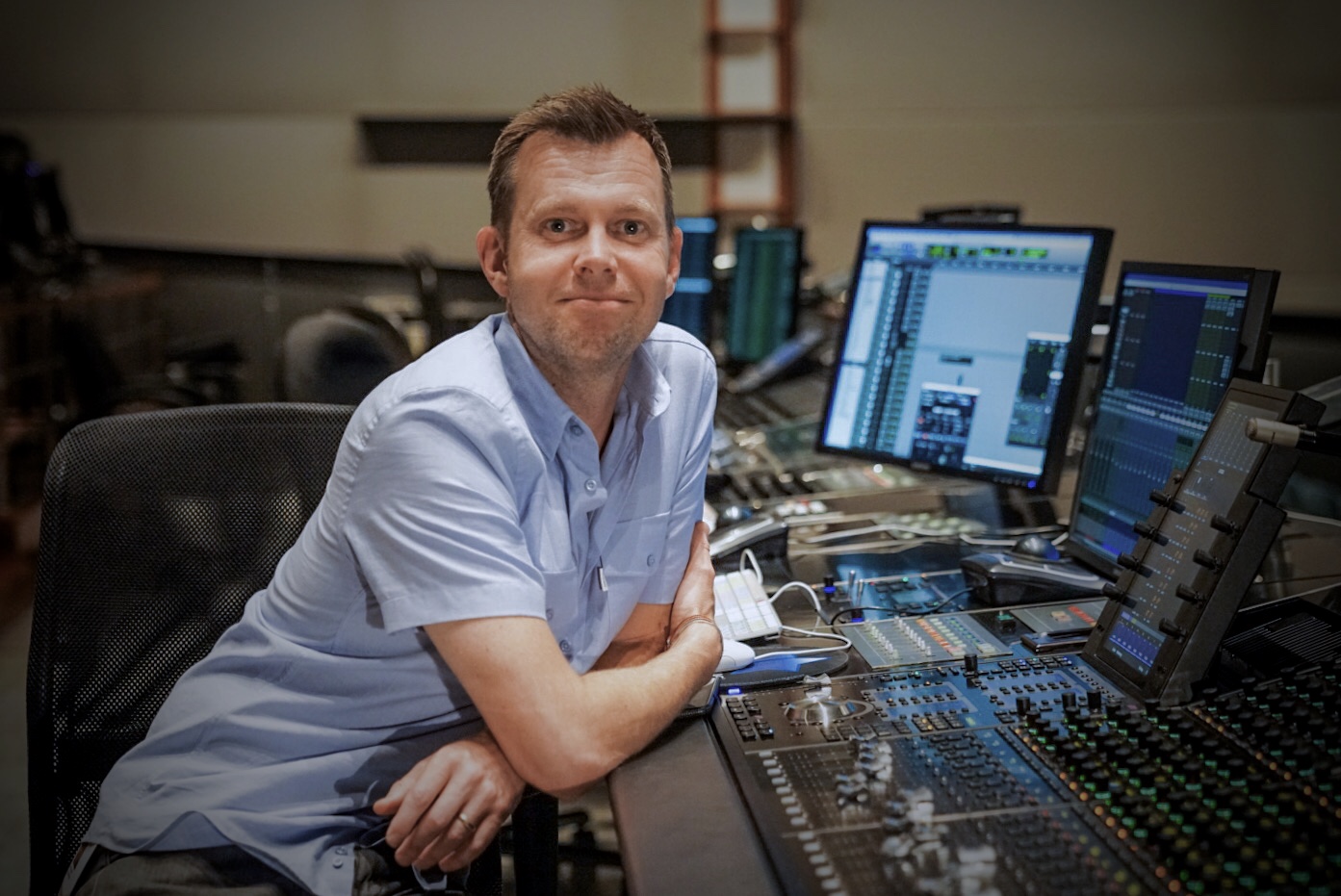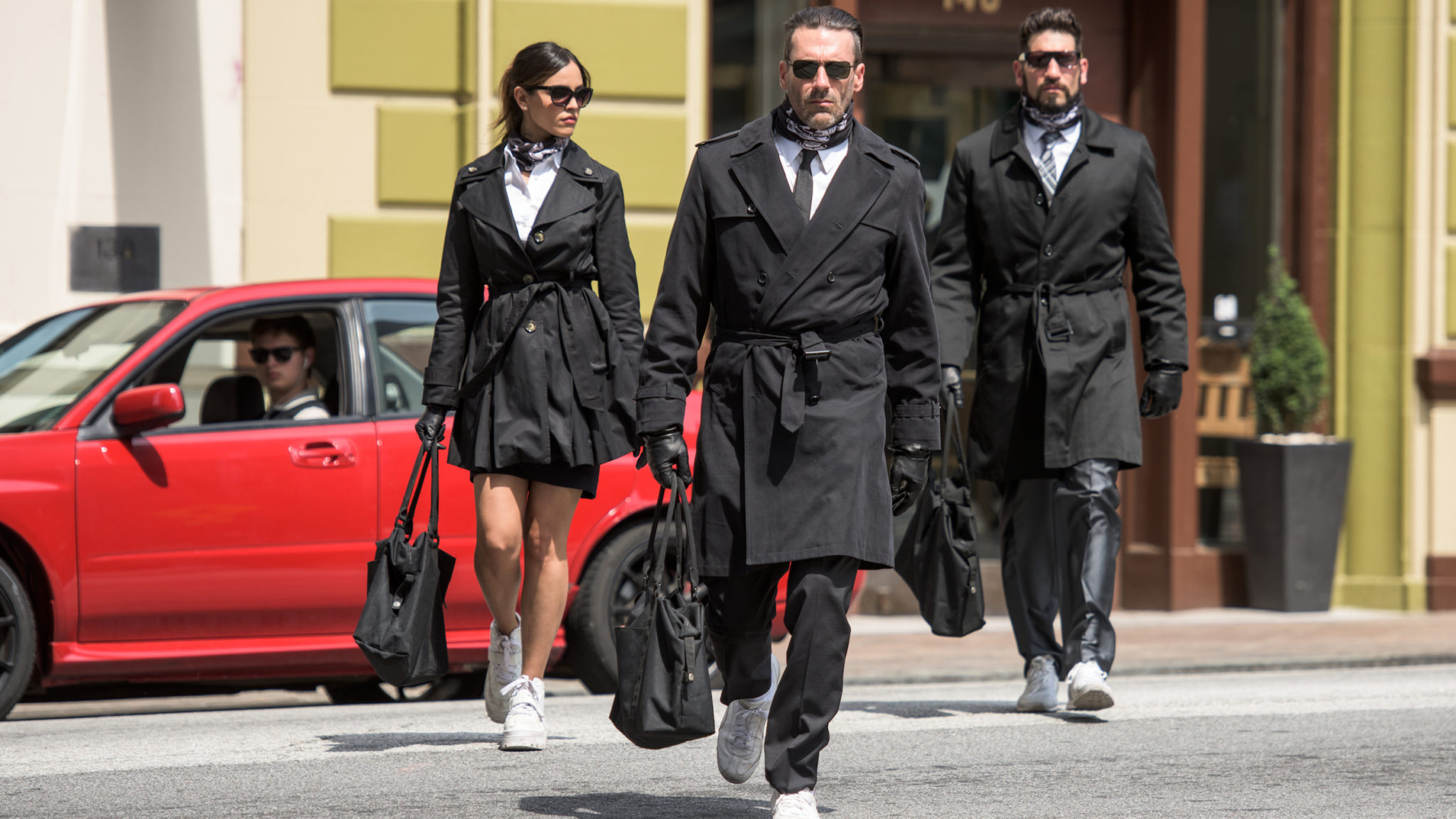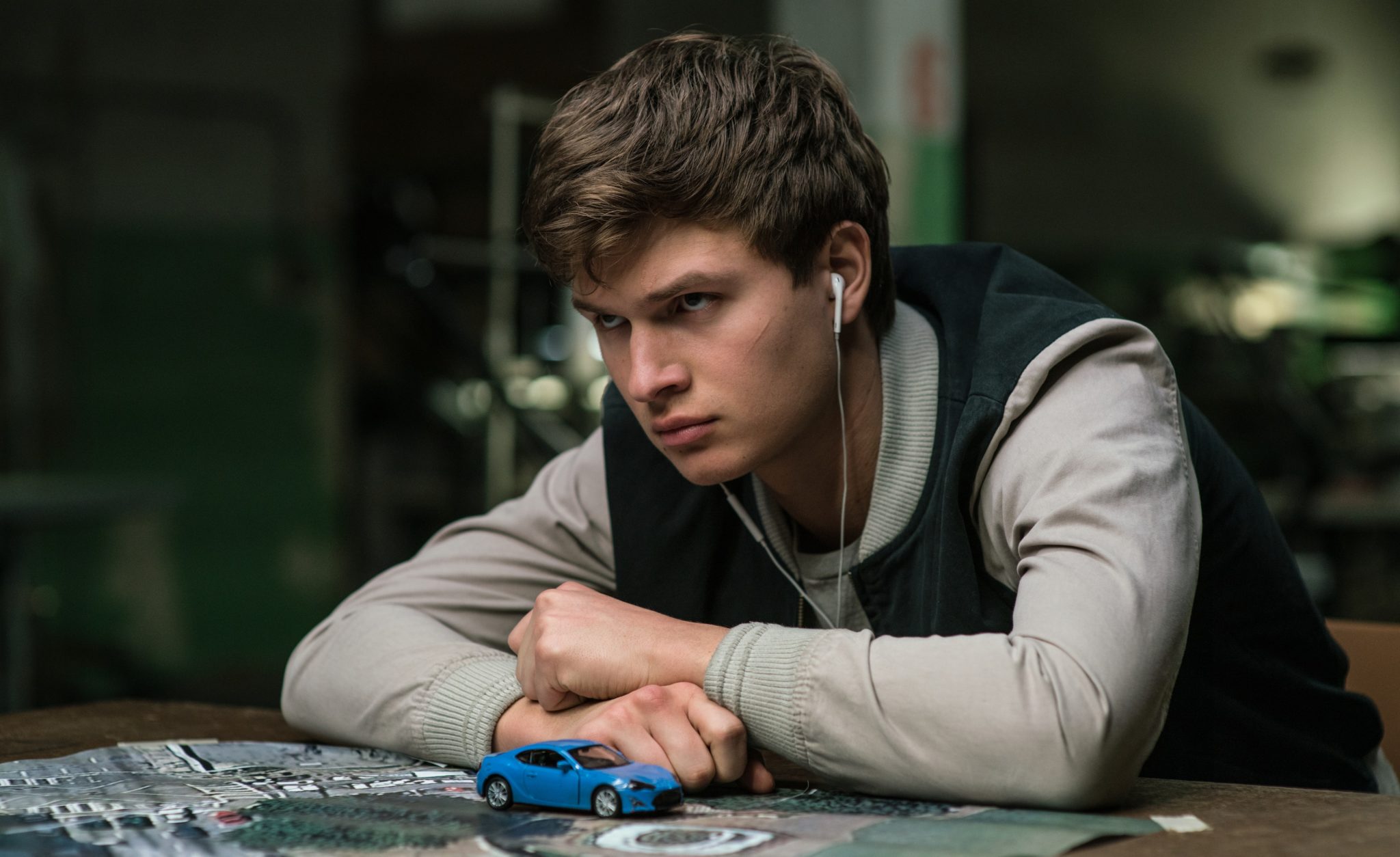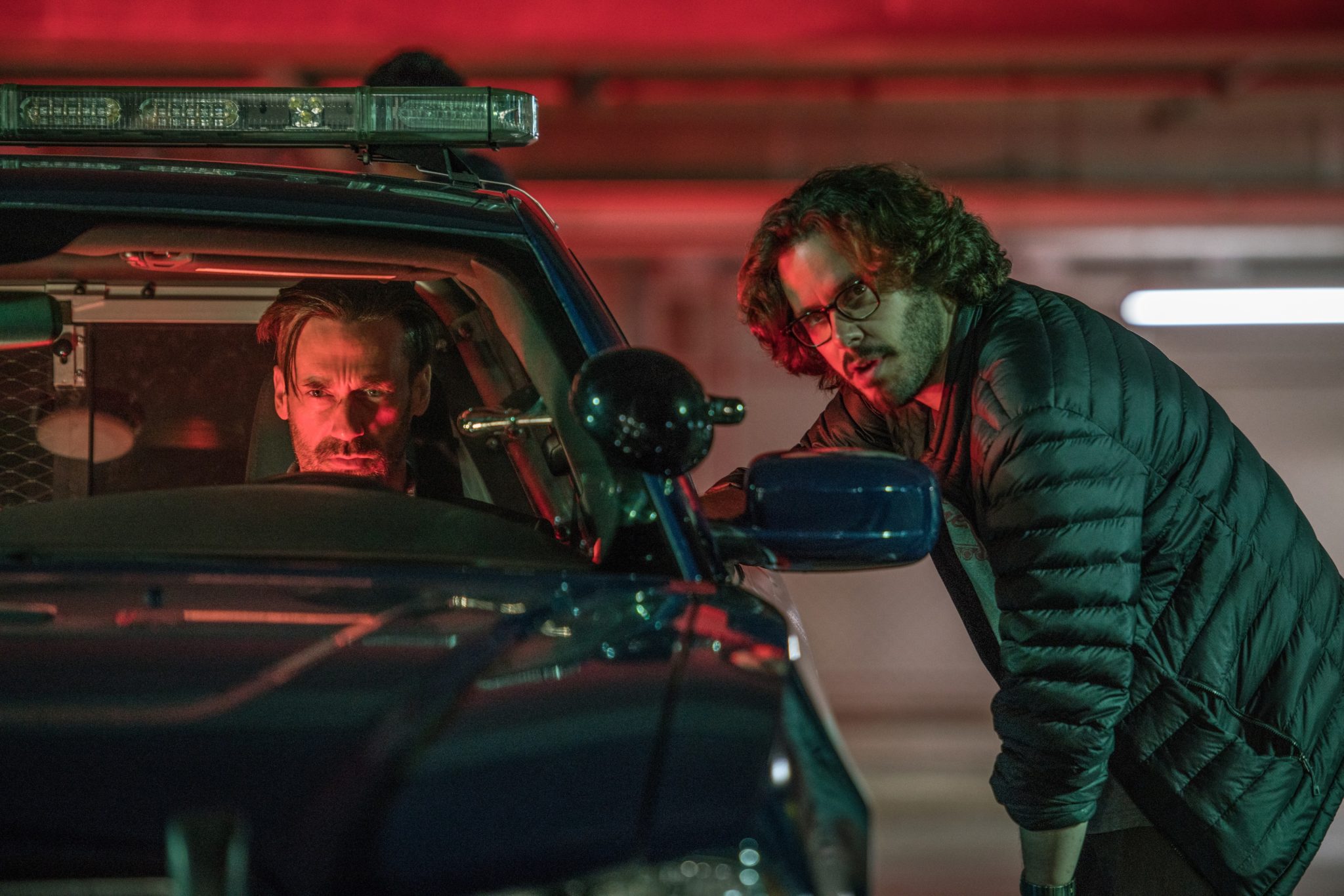
You could say director Edgar Wright has been creating film genre mixtapes since his very first low-budget spaghetti western sendup, A Fistful of Fingers, right on through Shaun of the Dead, Hot Fuzz and The World’s End. But then along comes Baby Driver, his heist-movie homage to the iPod generation, and the mixtape metaphor not only describes the film, it defines it. The sound design, mix and music drive the score but also the characters and plot.
Wright has called Baby Driver a musical, and it’s certainly one of the fastest and most furious, where songs motivate the action and ambient sounds syncopate the beats of each scene. From coffee runs to gun battles, plenty of genre tropes ricochet across the frame in tempo: Jon Hamm and Jamie Foxx bring the depraved humor, Kevin Spacey the chilling cynicism (which melts on cue), Lily James the angelic vision of another life, and Ansel Elgort the stoic determination of a damaged hero already in far too deep.
The way Wright introduced Baby Driver‘s concept to sound designer, mixer and editor Julian Slater was equally original and fitting, as was the concerted effort of Wright’s entire cast and crew. Slater has worked with Wright on all his films, and in Baby Driver, that collaboration hits a thrumming high note. The resulting nominations from BAFTA (shared with re-recording mixer Tim Cavagin and production mixer Mary H. Ellis) and the Cinema Audio Society — plus two Oscar nominations this week for Sound Editing and Sound Mixing (the second also shared with Cavagin and Ellis) — are the unexpected yet amazing capstones to a very special experience from start to finish, says the veteran sound designer and mixer (Mad Max:Fury Road, The Danish Girl, Jumanji: Welcome to the Jungle). We asked him how it all played out during production and post.
StudioDaily: You’ve worked with Edgar Wright many times before but Baby Driver is pretty unusual. How did you get your head around it?
Julian Slater: Edgar definitely has a particular way of working, but this was a completely different style and hadn’t been done before to this degree, so I kind of had to figure out from scratch how we were going to go about doing the syncopation to the music over the course of the entire picture. Edgar had been talking about it for quite some time now and I think he first mentioned it to me about two years ago. I happened to bump into him at a social event and he said to me, “I’ll send you the script. You’re going to love it. It’s particularly great for you.” He left it at that. And I thought, “Oh, that sounds intriguing.” I knew there would be some syncopation to music, but I honestly didn’t know if it was one sequence or one scene.
What did you think when you read the script?
Well, it came as an iPad app! As you turned each page it played the relevant piece of music, and he’d even put in some temp sound effects. So reading the “Harlem Shuffle” scene, where Baby goes to get coffee during that four-and-a-half-minute, one-shot sequence, you hear the music and hear temp footsteps in sync with the music. That was the point when I started shaking with excitement over how amazing it could be for someone like me.
Play audio-only track from the “Tequila” gun-battle sequence:
Audio Player
Yet everyone, especially the actors, has to be tuned into the music, like a live production, I’d imagine.
That’s right. All of them had earpieces to hear the music while filming, and Ansel, of course, is wearing those Apple earbuds for most of the movie. They were all listening to the music at that moment. For the “Tequila” gun battle sequence, they had it blaring over loudspeakers, and they had rehearsed it so they knew the drumbeats of that musical sequence and knew exactly where to fire the guns to be in time. Then I get hold of it and replace all the gunshots to make them sound more musical and then add off-screen ricochets and loads of other sounds to work in conjunction with the music. Edgar has this idea of where he wants to get the whole movie to and then he hands it off and I push it further through.
In addition to each song set in various scenes, there are ambient sounds running throughout with their own rhythmic logic. Were those elements planned out in advance, too?
No, it’s not that planned. Because I’ve worked with Edgar so much, he likes to bring me on board much earlier than I normally join a project. In this case, I came on about week three or four of director’s cut, so at that point there were only two reels for me to see. It was only then, when I sat down and took a good look at it, that I realized, “Ah, OK. This is where he wants to take this film.” The script in the app certainly gave a very good idea of where he wanted to take this film, but the dailies gave me permission to say, “How can we carry this all the way through?” For example, the opening “Bellbottoms” sequence where Baby is in the red Subaru, all those sirens are in tempo with the music. You’ve got to figure out not just when to do it, so it doesn’t become grating or abrasive or annoying to the audience, but the bigger part of that equation is figuring out how to do it.
Can you describe that process?
Every single sound used in the movie has gone through a sort of checkbox of steps. Working in Avid Pro Tools, first, we take a sound and tempo-map it to the piece of music so it’s working in sync. In the case of those sirens, they are mapped exactly to that piece of music [“Bellbottoms” by The Jon Spencer Blues Explosion]. We’d also pitch-correct them. But that then means that in some places they sound musical and completely great but in other places, they sound totally unrealistic as a police siren. For me, that’s the crux of the sound challenge: you have to figure out when in the mix you hear them and when you don’t. What you end up with are sounds that work both musically and cinematically. If they didn’t work both ways, we don’t have them in the mix. The mix became this kind of 3D, aural jigsaw puzzle. We’re building the mix up and out, pulling out, putting back in, as we go along.
How did you and Wright, and the film editors Jonathan Amos and Paul Machliss, work together during the mix?
We’re all together in adjoining rooms. I had a mixing deck in my cutting room and Edgar would come through and say to me, “Hey, let’s have a look at the ‘Tequila’ sequence,” and I’d do little fade moves and EQs on the music and the guns, which actually made it all the way through to the final mix. In the old days, you’d do a temp mix and then throw everything away and start again. But we never do that anymore. We’re continually shaping these building blocks of sound over the course of about six months. Because we’ve all worked together before — Edgar’s a very loyal director in that regard — what Edgar likes to do is get us all on the same floor of the same cutting rooms so that, literally, at any given point he can walk out of his picture cutting room and come and see me and do some sound design. Or Edgar could drop me a text and say, “Hey, pop into the cutting room,” and he and Paul can show me the sequence they’ve just finished and say, “over to you now.” It’s a great collaboration, where everyone knows each other well and we’re friends. There are no barriers.
But I’m sure there were a few in terms of finessing the mix. Which was the hardest to handle?
Oh man, it was all hard! But I loved working through every single sequence. How we treated Baby’s tinnitus was definitely a big challenge. The sound design of Saving Private Ryan‘s opening scene, where Tom Hanks’ character experiences a tunnel-like sound, followed by a high-pitched ring, is how tinnitus is usually conveyed in movies. In Baby Driver, since the film is from Baby’s POV, whenever he’s not listening to music, you hear the sound of tinnitus. We realized that if you’re going to play that over the course of an hour and 50 minutes, it’s going to really grate on the audience. So we had to figure out how to convey the feeling of tinnitus another way. Sometimes it’s a high-pitched ring. Sometimes it’s brake squeaks from cars going past, sometimes it’s held strings in the music. It’s also always in the same key as the music that has just finished or you’re about to listen to. The whole movie is a whole little set of interlocked puzzles for us in the sound department that we had to figure out how to treat. Although the sound is almost a character in the movie, it is only enhancing the story. Hopefully, the viewer hears it as Baby is hearing it. That was our goal. It should never push you away or distract or alienate you in any way from the story and the acting on the screen.
How often did you have to back up and try again if it wasn’t working?
All the time. After the tempo-mapping and pitch-correcting, we’d often be left with sounds that were so musical that you can’t discern them from the beat of the drums. The “Tequila” gun battle is exhibit A. We had to scratch what we’d done and put new sounds in until it worked. Other times, we needed to push them closer to something more realistic. There’s a lovely moment when Baby is having dinner with Debora and he’s putting his finger on the edge of the crystal wine glass to elicit a sustained ringing sound. Originally, that didn’t sound very musical at all, so we made it sound more musical. But in that moment, it didn’t work, and didn’t sound like a realistic effect. Things like that went through several iterations. Well, really, every sound went through several iterations before it worked musically, cinematically and logically.
Was the dialog the only thing remaining from on-set recording? Did you save any of the car sounds in the action sequences?
Dialog was it, and everything else was scratched and went in the bin. We got all of those cars that you see in the movie back for a few days and recorded them on a private race track. And this is something I discovered on Mad Max: just because they are the recordings of the cars you see, still they may not sound particularly great. That red Subaru has what’s called a dump valve, so every time you change gears you get this kind of [he imitates the sound of an engine revving up and shifting] sound. You can’t move to the music with that sound in the background! So we actually used a variety of six different cars to make that one car’s sound up. You always hope you record once and have it sorted, but inevitably they didn’t work in the mix.
Any happy surprises along the way?
There’s a sequence after the “Tequila” shootout when they go back to Doc’s hideout and there’s a whole thing where he’s talking about a secret code word, bananas. Every diegetic sound in that sequence — the bag drops, the light switches, chairs move — you hear them the first time on screen, and then they’re delayed and echoed and repeated in the surround speakers in tempo with the score. So by the time you get to the end of the scene, you’ve got all these delays of light switches, bag drops, footsteps, chair squeaks that are all working toward this kind of symphony of diegetic sounds. I remember the first time I heard that, I got goosebumps. We’d never done this before to that degree. I knew then that I was lucky to be part of this.
Even though he’s never made anything like this before, is this a movie only Edgar Wright could have made?
To the film’s complete credit, it’s an original story that’s not a sequel and is told in a totally unique way. I think a movie like this is really important for the industry and I think the industry needs people like your Edgar Wrights and Quentin Tarantinos making original movies told in their very individual ways. But I was talking to the post supervisor and I said, “You know, this is a very un-Edgar movie.” And she said, “Oh, I disagree. If you turned down the sound, the style of the cutting identifies it straight away.” I guess both of us are right, but it’s very different from his previous work. It’s a much more emotional and visceral picture. And it’s definitely not a straight out comedy. People touted it as a comedy before it was released, and I guess they expected that from Edgar. It’s not. It’s got some very funny bits in it but it’s a thriller/drama/heist.
How did you discuss — and serve — that overall emotional arc with Wright in terms of the sound?
Edgar was clear that the movie start on a sparkling high note with this cool-as-hell getaway driver moving to his own perfectly calibrated internal beat. But that’s the only perfect chase sequence in the movie for Baby before it all starts to go downhill. Every subsequent car chase or foot chase just gets worse and worse and his world just starts collapsing in on him. So, for example, the tinnitus sounds are much louder in the second half of the movie. The more stressed that Baby gets, the louder the tinnitus. The design and mix of the film starts to twist and push and break apart elements as Baby’s world crashes in on him. Hopefully, the audience is feeling what he’s feeling.
Play audio-only track from the scene in which Baby loses his hearing:
Audio Player
Were there any scenes or moments that were particularly challenging to get right?
The scene that was probably the toughest to crack came toward the end, when Baby’s ears were blown out by Buddy. We needed to convey that Baby was now deaf and cannot hear Debora. The audience, however, needs to hear her or else nobody would know what the hell was going on. Quite often we’d think we’d cracked it, then we put it up in the screening room and realize we hadn’t cracked it all. We didn’t lock that scene down until very, very late in the process. That was a very tough nut. What we finally landed on was the police sirens in the distance get bit-reduced and turn into tinnitus, she and everything else is muffled and echoey until he puts his hand on the speaker in the car when she’s playing the mix tape of his mother. It’s how his foster dad, played by CJ Jones, listens to music, by feeling it.
Have you been surprised by how the film’s been received?
There were seven of us on the sound mix crew and we all felt that we were working on a very unique and different film and the work we were doing, which was very special to us, was also unique and different. But I never imagined in a million years that I’d be speaking about it to someone like you nearly a year later. This is a first for me. We spend weeks and months in these dark rooms and when the films go out into the world, the most people seem to report on is the box office or how it’s done on Rotten Tomatoes. When we finished Baby Driver, the sound department went out for a drink and said, “We’re never going to have that experience again. But wouldn’t it be great if others picked up on what we did do?” When we debuted it at South by Southwest, the reaction was so immensely positive that Sony accelerated its release by seven weeks. For non-industry people to talk about the sound of a movie in this way is just amazing. It’s a career highlight for me. But I’m only as good as my director, and someone like Edgar really thinks about sound as he writes the script. He understands what it’s capable of. And I feel lucky to have been able to work with some pretty cool directors who feel like that.
Did you enjoy this article? Sign up to receive the StudioDaily Fix eletter containing the latest stories, including news, videos, interviews, reviews and more.













